With a new year often comes a renewed desire to see and experience new things. In Osaka, this is no different. So, we have a variety of events and sights to see and enjoy throughout the month of January each year.
With such a selection of activities available, it can sometimes be difficult to decide where to go and when. Thankfully, once again, here at Osaka.com, we’ve got you covered. Here is our list of the top ten things to see and do in Osaka in January each year.
Table of Contents
New Year’s Shrine Visit: January 1st to January 3rd
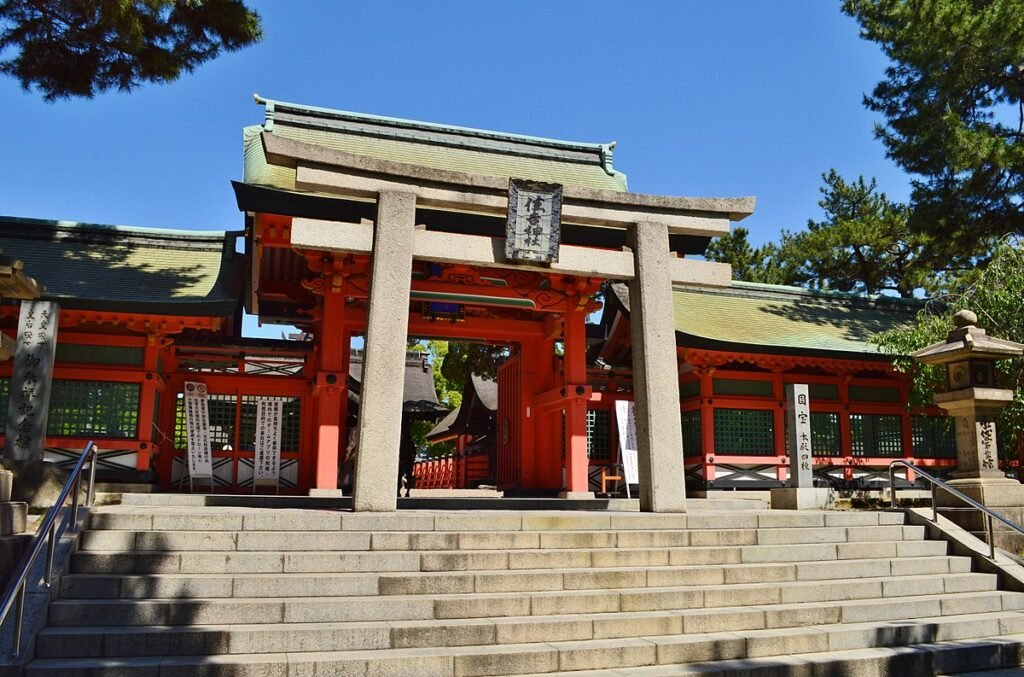
Let us begin with perhaps January’s most widely known event, the beginning of a new year.
New Year in Osaka is perhaps quite different to what many foreign visitors would expect. Unlike New York, Sydney or Hong Kong, there is no elaborate fireworks display, or mass street parties.
Instead, it is customary for families to eat a specially prepared dinner at home together. They will then go to a nearby shrine for a ceremony called Hatsumode. Loosely translated, this means “1st shrine visit of the New Year”. In Osaka, perhaps the most popular venue for Hatsumode visits is Sumiyoshi Taisha. Bear in mind that, since families traditionally go to shrines as a group on these days, the Shrines can be exceptionally crowded.
However, whilst most families like to go at some point on January 1st, within the context of Hatsumode, any time from January 1st to 3rd is fine for a visit. At the shrine, families will pray for good health, prosperity and success in the New Year. If they have a special life event coming up, such as a wedding, graduation or new job, they may pray for this too.
Shrines also sell specific charms, amulets and other such items to give you that little bit of extra good luck. Even if you don’t believe in the power of such things, they still make for bright, colorful and thoughtful souvenirs for loved ones back home.
At these shrines, you can also sample “Amazake”. This drink is hard to define. Probably it is best described as a sweet, non-alcoholic variant on rice wine.
Hatsuhinode: January 1st
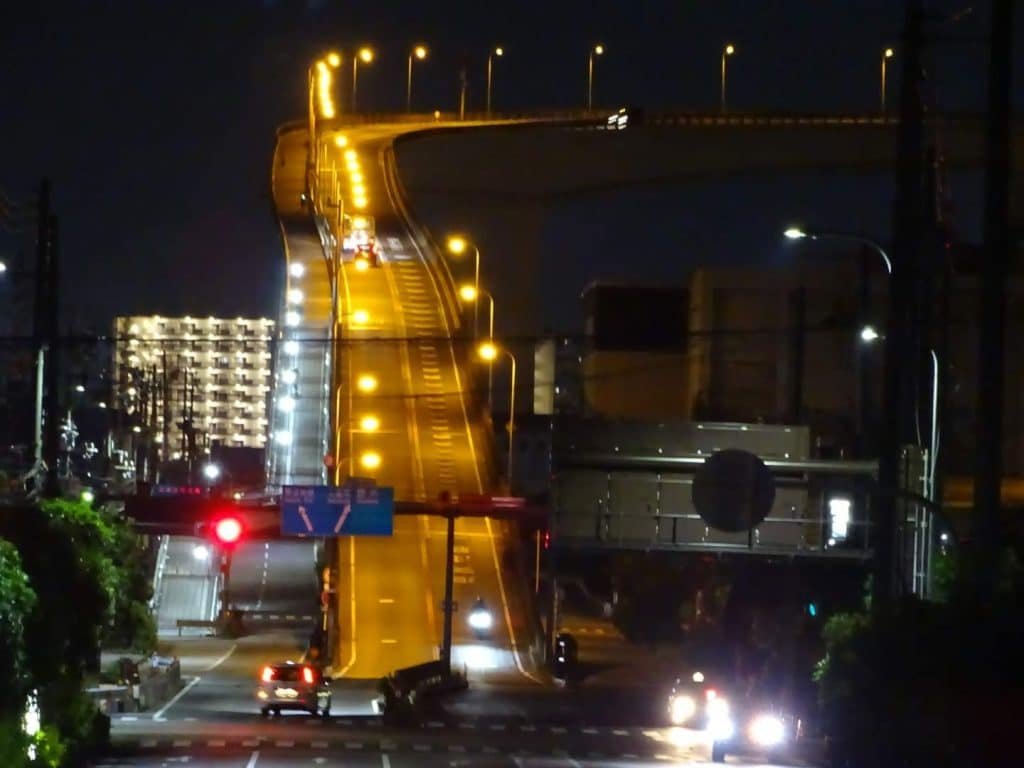
Along with shrine visits, another proud New Year tradition is that of Hatsuhinode. Meaning “first sun of the New Year”, this basically means gathering together with family and friends to watch the first sunrise of the New Year. Of course, high vantage points, such as hills and skyscrapers will offer the best view of this. However, such places can be difficult to access. This is particularly so at around 5am on January 1st, when everything is closed and transport options are severely limited.
However, as a former resident of Osaka’s Minato Ward, I have an ideal viewing spot for you, known only to locals. There is a large bridge, known as Namihaya Ohashi, connecting Minato Ward to neighboring Taisho Ward over the Osaka dockside area.
In order to clear all the large ships and cranes dotted around the area, this bridge towers high into the sky. It rises above all the buildings in the adjoining wards, offering magnificent panoramic views of Osaka City, all the way to Umeda. However, if you look to the east, it is the perfect spot from which to watch the sun rise from behind the mountains of nearby Wakayama Prefecture. As the sun slowly peeks over the mountains, seeing the first shaft of new year light hit the city’s urban mass is truly a heavenly sight to behold.
Namihaya Ohashi is about a 15 walk from Osakako Station on the subway Chuo Line.
Shittenoji Doya Doya Festival: January 14th
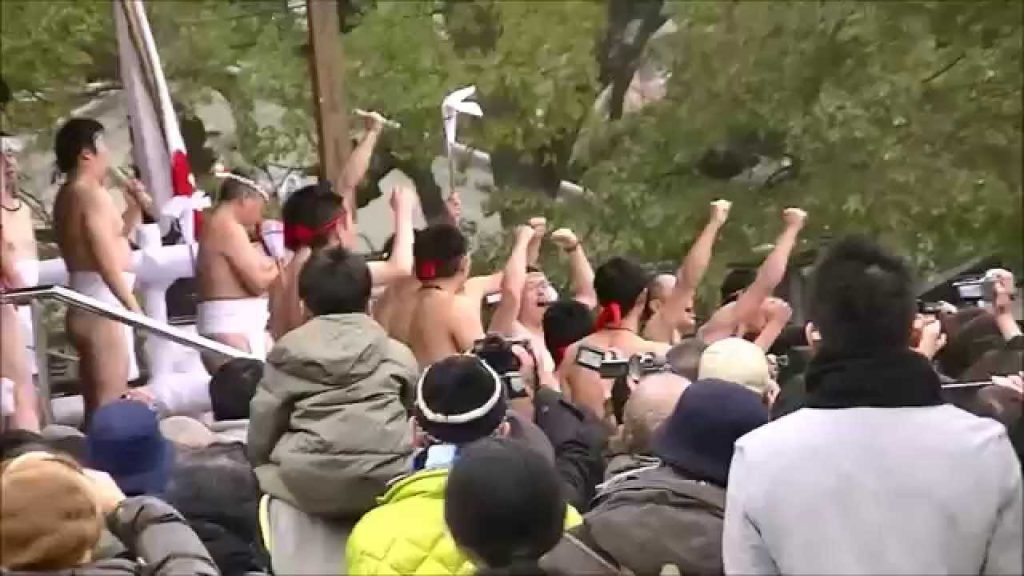
We now move on to something a bit different. The Osaka Doya Doya Festival, also known as the Osaka naked festival, is a highly competitive cultural contest. Teams of men and boys, wearing only traditional loincloths, compete in teams for bundles of money. Throughout the entirety of the event, the competitors are regularly soaked with cold water. Imagine the classic Japanese Game Show Takeshi’s Castle, but with a decidedly more ferocious edge.
The actual point of this long-running tradition is to mark the formal end of the 14 day period of worship following the start of the New Year. However, for spectators, it’s also a highly entertaining sideshow. Entry is free, and the event usually kicks off around 2pm, running until the early evening. However, this is also a very popular Osaka institution, so get there early if you want to mark out a good spot from which to watch the ensuing carnage! The event takes place at Shittenoji Temple, a short walk from JR Tennoji Station.
Nankinmachi Lantern Fair: Until January 9th
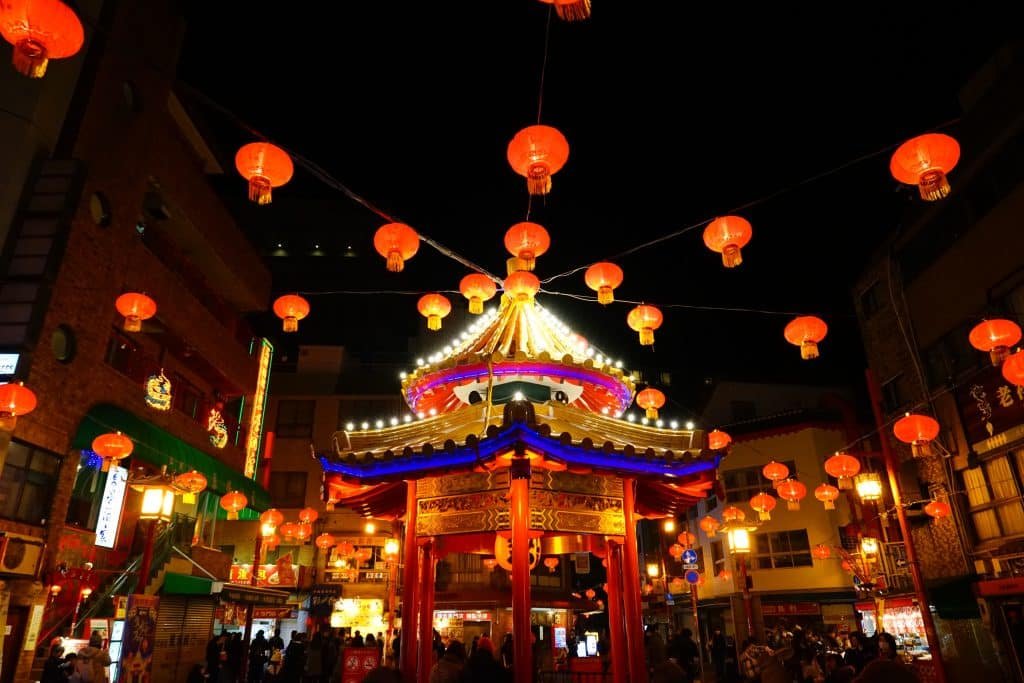
A short train ride from Osaka brings you to the city of Kobe, and its legendary Nankinmachi China Town. This area is renowned throughout the year for its exceptional Chinese food. However, the already colorful streets of Nankinmachi become even more vibrant during the winter holidays.
Starting in late December and running until January 9th, the Lantern Fair sees the streets in and around Nankinmachi’s main square light up in spectacular style. Red lanterns, in the traditional Chinese style adorn the whole district. They provide the perfect background to those seeking somewhere for a gentle stroll and, perhaps, some excellent Chinese food.
Entry to Nankinmachi is always free. However the lanterns come on each day after sunset. So the exact timing isn’t set. If you’re planning to go along and see the lanterns, then I recommend timing it to coincide with your evening dinner.
Nankinmachi is a short walk from JR Motomachi Station, one stop from Sannomiya, Kobe’s main transport hub, on the JR Himeji Line.
Nembutsu Oni Hashiri: January 14th
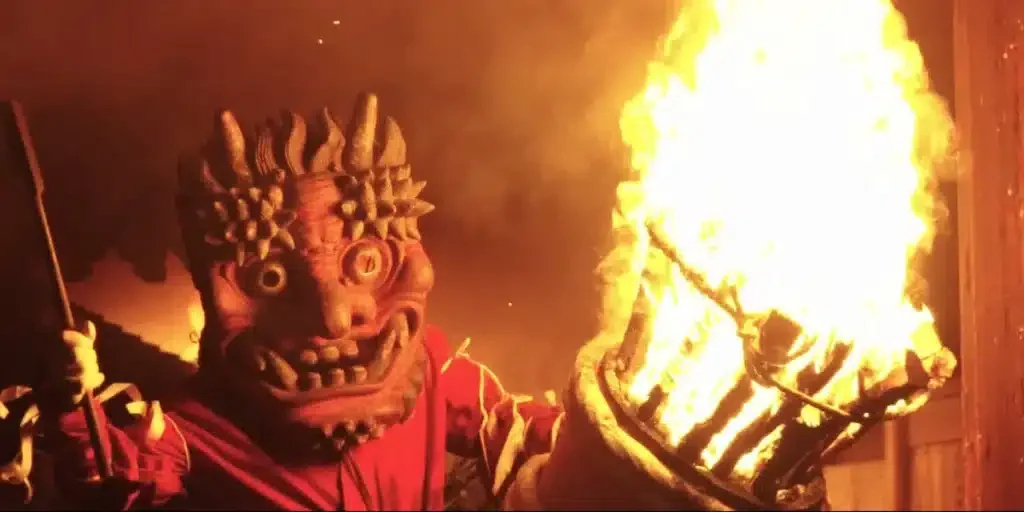
In Europe and the US, we typically associate Halloween with the chasing away of demons and evil spirits. However, in Japan, such events happen throughout the year. In the Osaka region, one of the most famous is the Nembutsu Oni Hashiri. Literally translated, Oni Hashiri means, running demons away.
The event takes place in Nembutsu temple, sandwiched between Nara and Wakayama Prefectures, about 1 hour and 50 minutes from JR Osaka Station.
Festivities kick off at 1pm with a “demon run”. Here, numerous people dressed in colorful and occasionally scary Oni costumes run through the temple grounds, to the sounds of beating drums.
Numerous other parades and events take place through the afternoon and into the evening.
The big climax comes at 9pm, with a torchlight parade finally “driving the demons out” of the temple for another year. This is undoubtedly one of the Kansai region’s most colorful events and an absolute must see for visitors to Osaka at this time of year.
To reach Nembutsu temple, take a train to Yamato Futami Station, on the JR Wakayama Line.
From there, you have 2 options. Either walk the 35 minutes or so it takes from the station to the temple, or take the free shuttle bus from the nearby Ueno Park parking area.
Wakusa Yamayaki: The Last Saturday of January (subject to weather)
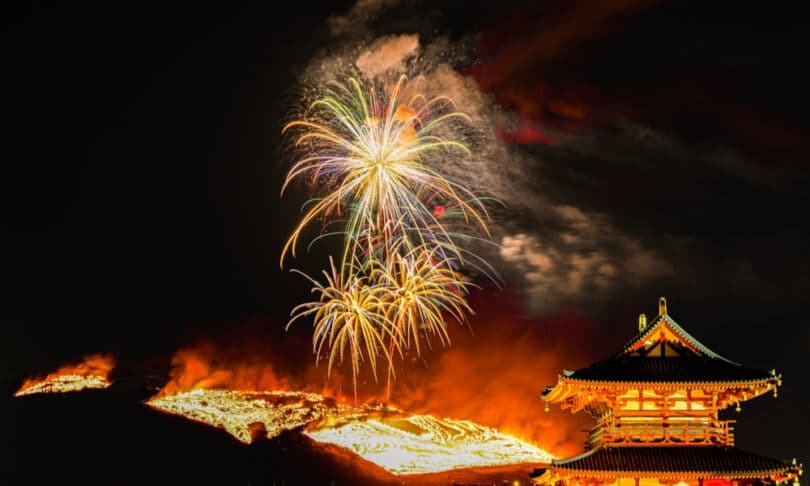
Have you ever wanted to see an entire mountain set ablaze, whilst an abundance of fireworks explode behind it?
Well, then Wakusa Yamayaki may be just the event you’ve been looking for. This event takes place in Nara Prefecture, about 1 hour or so outside Osaka. A ceremonial fire is lit on the mountain (after all “yamayaki” means burning mountain). As the fire burns, fireworks fired from behind the blaze lights up the sky.
The exact origins of this ceremony remain unknown. Some say it came about from a territorial dispute between two rival temples. Others say it serves to scare away wild boars and other dangerous animals. And then, there are, as always, those who ascribe a supernatural rationale to its inception. In any case, Wakusa Yamayaki is an event not to be missed. Such is the elevation of Mt. Wakusa, it can be seen from all over Nara City.
New Years’ Sales: From January 4th
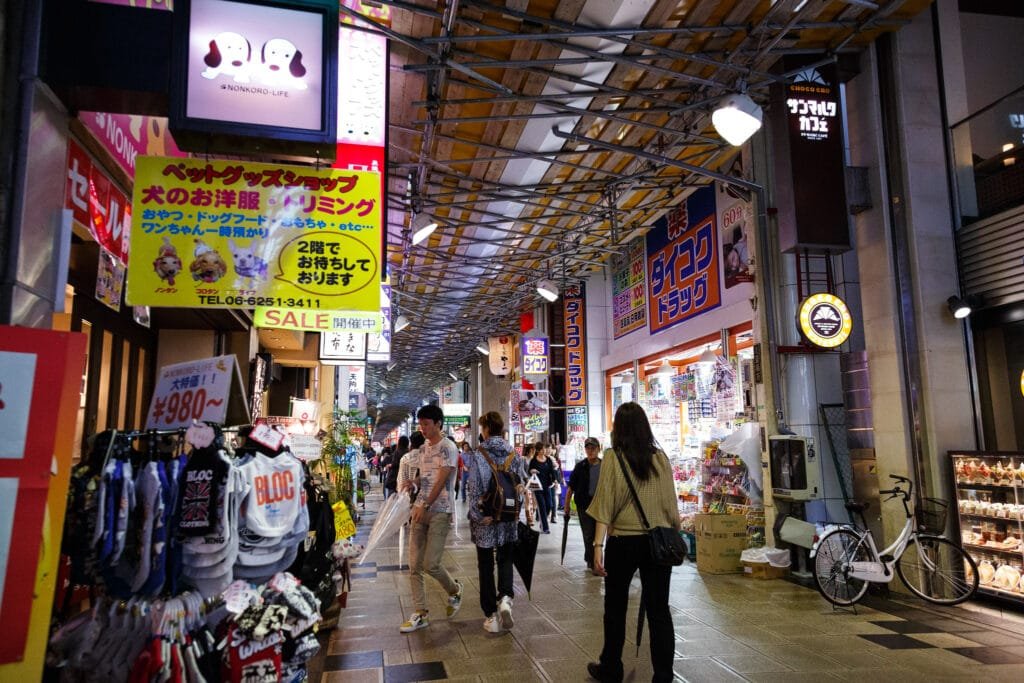
As we mentioned earlier, New Year festivities in Osaka are quite different from those of other countries. However, one common thread that Japan shares with most other nations is the love of some New Year bargain hunting.
The shopping districts of Shinsaibashi, Namba and Umeda, with their various department stores and speciality shops, start their New Year sales period immediately after the winter holidays end.
So, get in line, and get over to your favourite department stores to bag a bargain.
Of particular interest to tourists will be the Shinsaibashi area for fashion goods. If you like your gadgets and gamer tech, then also be sure to check out Den-Den Town and the nearby Duty Free shops, offering tax free bargains.
For more traditional Japanese fare, the likes of the Hankyu and Luminaire department stores in Umeda offer a variety of locally produced goods. Of particular note are their handmade goods. These can be very expensive, but you can feel the quality when you hold them. And with the sales period in full swing, January is as good a time as any to treat yourself to something special.
Coming of Age Day: the 2nd Monday of January
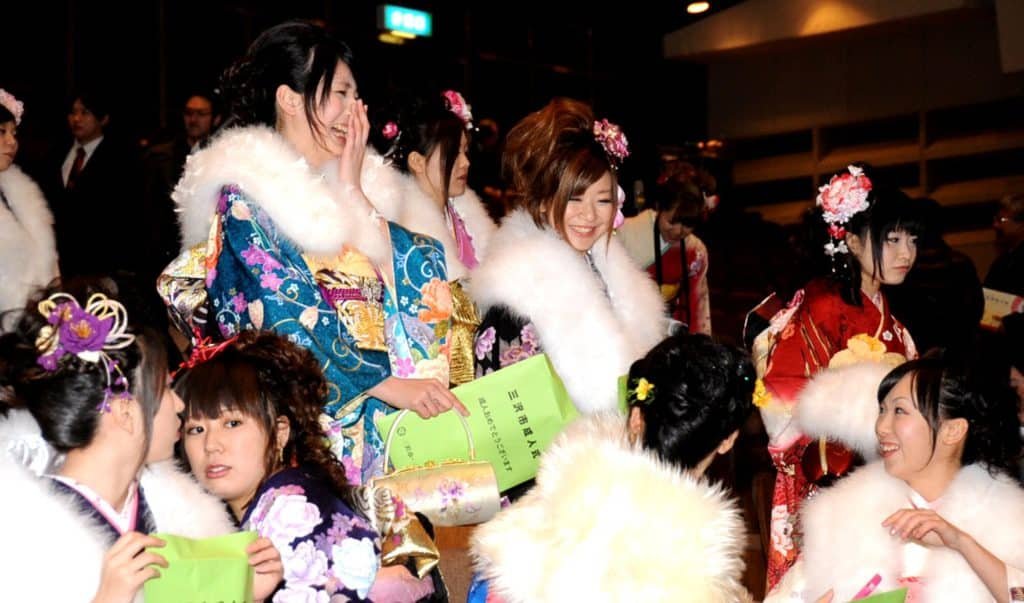
This annual event takes place across Japan, usually on the 2nd Monday of January. It commemorates young people reaching the age of adulthood. Until recently this meant that all adolescents who were due to turn 20 that year would celebrate the day. However, in 2022 the Japanese government amended the law. The age of adulthood in Japan is now 18, bringing it in line with many other countries.
Despite the drop in the age of the participants, the festivities remain pretty much the same in Osaka. Events are held at local government offices with young people registered in each ward invited to attend. Afterwards, many will hold ceremonies at nearby shrines. Young women wear their finest kimonos, and men often do so too. However, in recent times, men have tended more towards western style suits on this day. If you’re near a shrine on this day, then it’s definitely worth stopping by to immerse yourself in this important moment not just in Japanese culture, but for Japanese people themselves.
Of course, one should also proceed with caution that night, as many of Osaka’s bars and Izakayas will be awash with young people eager (in some cases maybe a little too eager) to get drunk for the first time, legally anyway!
Nijo-Jo Gardens Annual Opening: January 1st to January 3rd
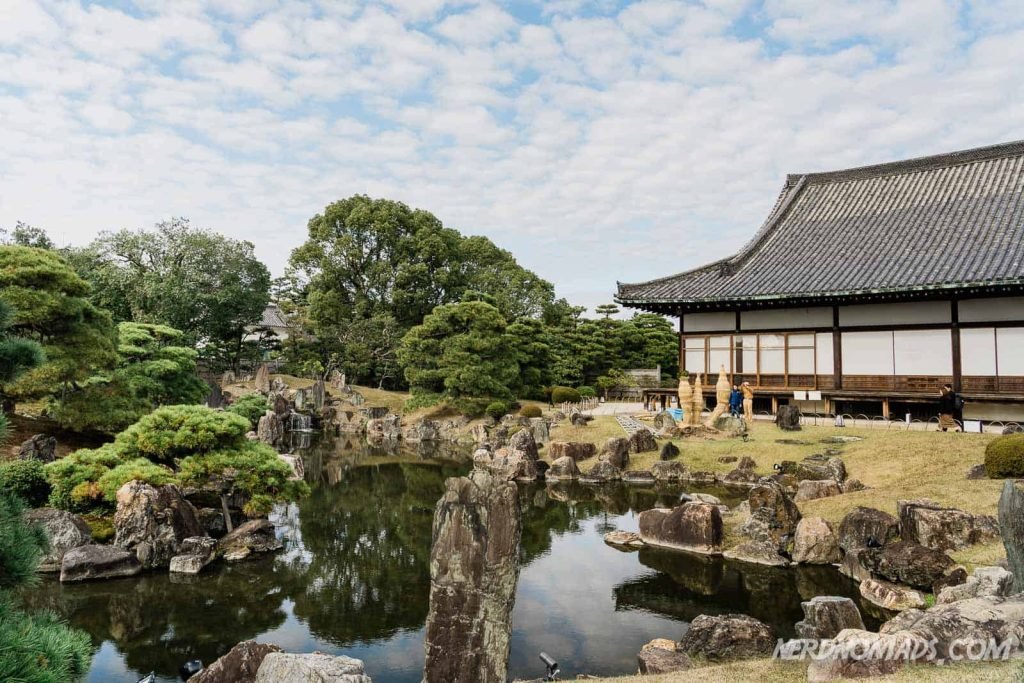
One of Kyoto’s best known cultural assets, Nijo Castle is home to the famous “ninja-proof” floorboards. So-called, because no matter how light-footed someone may be, it is impossible to walk along these floors without making a sound. Historically, this protected resident nobles from possible assassins. However, in January, our reasons for making the short trip from Osaka to the Castle are far more peaceful.
Nijo Castle is home to an especially beautiful Japanese garden. However, the gardens are, for most of the year, only viewable from the main courtyard. However, for 3 short days at the beginning of January, these beautiful gardens are open to the general public.
If what you are looking for is some peace and quiet after your New Year partying spree, then Nijo Castle’s gardens may be just the tonic you are looking for.
Entry costs 400 yen. The gardens are open from 10am until 5pm, but last admittance is 4pm, so get there early.
Touka Shinji: January 4th
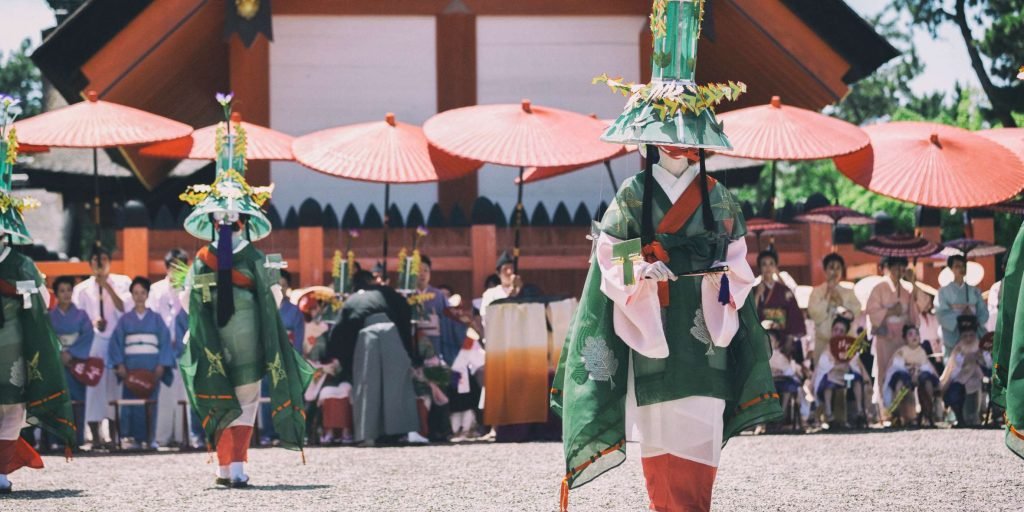
We return to Sumiyoshi Taisha for out final event on Osaka’s January calendar. Touka Shinji is a “mocha-throwing” event. It closes out the New Year festivities for the shrine and surrounding area. Women dressed in ancient ceremonial robes, characteristic of the shrine’s founding times, throw mocha rice cakes to the gathered crowd. Legend has it that those lucky enough to catch one of the cakes will enjoy good luck in the year ahead. If not, then hey, at least you get a delicious sweet rice cake for free!
Regardless, the event is a staple of the Osaka January calendar and makes for a unique photo opportunity and cultural experience.
Visiting Osaka in January
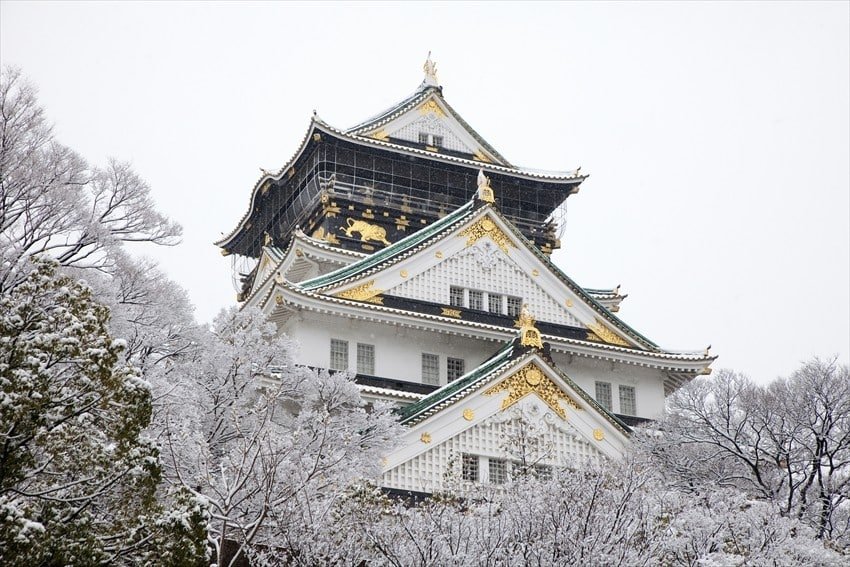
Finally, I would like to close out today’s story with some advice. Although Japan has a reputation for increasingly hot, humid summers, winter is every bit as cold as you would experience in Europe or North America. So, don’t forget to bring plenty of warm clothes, especially for these festival events. They can run several hours and are almost exclusively held outdoors.
That being said, January is a great time to visit Osaka. As with any other time of year, there’s never a shortage of things to do and see!
























